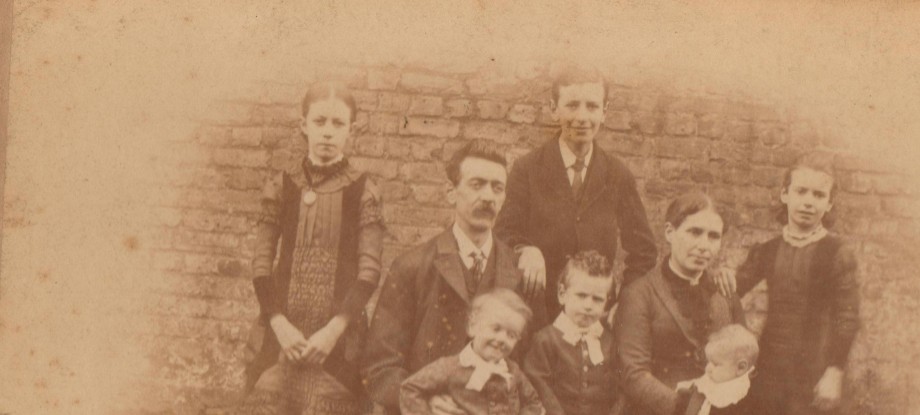Picking up on some of the recent blogs, verification is paramount to writing a family history; after all, it is what sets it apart from a work of fiction. So how do we go about proving what has happened and separating it from what we think has happened? The truest answer of course is that we cannot ever be absolutely certain- if all we have to rely on are past documents and photographs rather than a genuine, personal account of somebody’s real concerns, motivations and experiences, then proving anything becomes challenging.
Today technology allows us to go a long way towards constructing a relatively accurate story of the past, and much more easily. Through the use of online resources and websites, technology’s reach has become vast and, as a result, illuminates that past a little more brightly. However utilising such modern means in researching our past does not equate to having that information automatically verified; just because information is accessible, visible and digitised does not mean that it is correct. When it comes to verification, do we really know what we are looking for?
One item in the toolbox I have for researching my family history is the website, www.Ancestry.com. I had first discovered its software predecessor, “Family Tree Maker”, many years ago- I thought it was great that somebody had come up with a way to keep track of all those relatives, stories, journeys, generations and information. But a decade ago the software did little more than digitise what I was already able to do by hand, namely, map out my family tree. What I was rather looking for was more along the lines of what the company have since added to their services. Today, Ancestry.com has records and information from over a century ago, on everything from the passenger lists to the university yearbooks of all those who came upon America’s shores during the early part of the 20th century. I now use the service regularly, expecting it to provide me with information and, more importantly, verify my findings as a respected database of records.
But records, whether paper or digital, are not always accurate, as I recently found in the case of my grandfather. “Yovcho Tzaneff” was my paternal grandfather and I have heard many stories about him growing up, not least because he was living, together with his wife, my paternal grandmother, at home with my parents until he passed away, exactly one month before I was born. Searching for his name one day on Ancestry.com, I came across a myriad of “Tzaneff”s, or variations thereof, and was surprised when there was no immediate result. Moreover, typing in my great uncle’s name, “Doncho Tzaneff”, who had helped my grandfather to go over to America as he was there years before him, produced even less results and came up with “returned zero good matches”. It wasn’t until I edited my search and asked the program to search on “phonetic matches, names with similar meanings or spellings and records where only initials are recorded”. This search produced something entirely different.
My grandfather’s record finally materialised, but not under “Yovcho Tzaneff”, as I knew him and as is written on his death certificate and tombstone, but as “Iovcho Tzaneff-Fetcoff”. For me, this was a mistake, because I knew better, because this was not an ancestor whose records were lost or non-existent.

Yovcho Tzaneff’s registration on New York’s Passenger Lists, 1820-1957. He is the first one registered, but as “Iovcho Tzaneff-Fetcoff”.
Going through the New York Passenger Lists of 1820-1957 I saw several other mistakes on this record. I only recognised them as “mistakes” because I had already done much research and interviewing on my father’s side of the family and knew what I was looking for- but, it seems, even if one knows what they are looking for (and more often than not those of us writing family histories can say we are ‘discovering’ rather than ‘knowing’ a lot of information), that information comes up differently sometimes. So was this an “error”? Is it “verifiable”? Did my grandfather want to have his name recorded that way or did the clerk simply put down what was most phonetically correct in the interest of efficiently processing all of the immigrants arriving by the hundreds and thousands?
In the case of my grandfather, his name was recorded as “Iovcho Tzaneff-Fetcoff”. I considered this. We have the name “Petkov” in our family history, as recently as my grandfather’s generation. The only reason I know this (and did not overlook this entry altogether therefore) was through a separate line of research I began to conduct after I discovered that our family name changed at some point and how this change was not specific to our family alone but rather occurred on a larger scale within the country. Nevertheless, we were not “Fetcoff”.
Furthermore, his “Birth Location” is recorded as “Restambol”. This is also incorrect- the correct spelling of the name is “Kestambol”. However, even with this correct spelling of the birthplace, if one looks at a map of Bulgaria today one won’t find “Kestambol” because this is the name the Turks gave to the town originally named “Mominsbor” during the Ottoman Empire’s 500 year rule over Bulgaria. Since the liberation in 1878, many Bulgarian towns slowly reverted back to their original names. I only recognised this “mistake” because I remember my father’s stories about how his village was once called “Kestambol” and why it was known by two different names.
Thus, even a well-known and respected database of records such as www.Ancestry.com still has to work “with” the researcher rather than “for” the researcher. Verification ultimately rests with us and, it seems especially, only after we know what we are looking for.
Kristina


3 Responses to Verification – Do you really know what you are looking for?